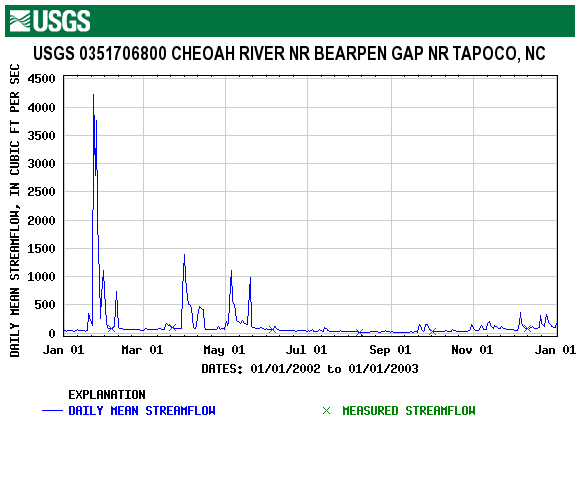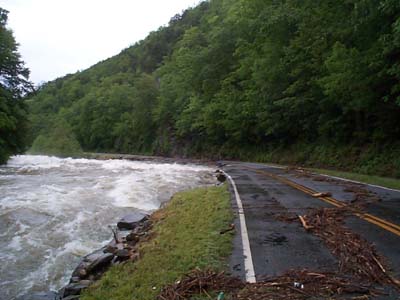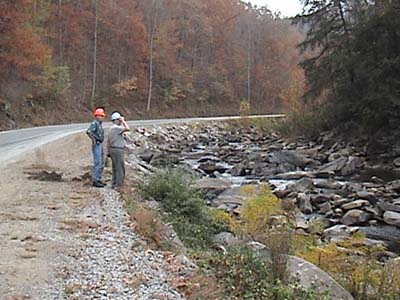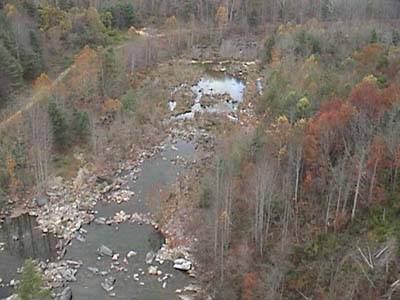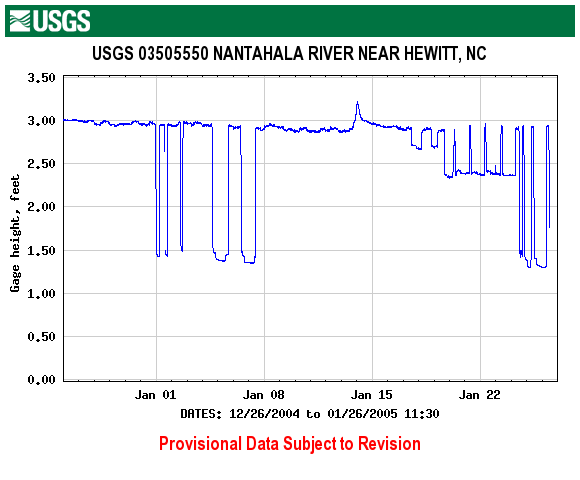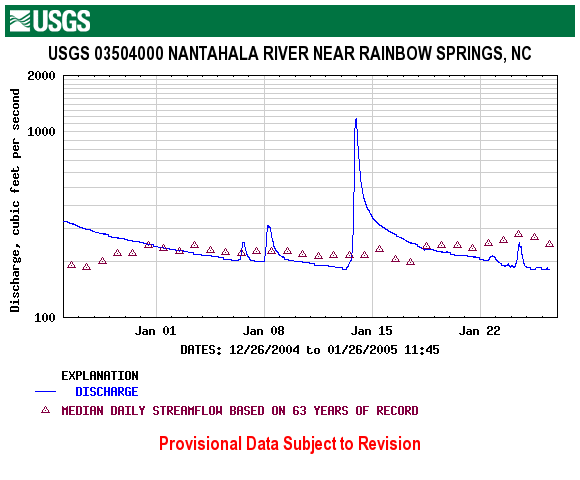Dam Impacts: Bypass and Downstream Reach Examples
Cheoah River - Bypass Reach
The hydrograph below depicts the “Hell or High Water” aspects of the Cheoah before base flows were restored through the FERC relicensing process in 2004. (For more information about American Whitewater's role in restoring flows, visit our Cheoah Project Page.) Note that most of the year the flow is a fairly constant 20-50 cfs which is provided entirely by tributaries that flow into the Cheoah between the dam and the gage, as are the small increases in flow seen in November and December. The large flow of 4,200 cfs is a spill over Santeetlah Dam, while the medium sized flows may be spill or tributary inflow.
The following two photographs show the Cheoah during a large spill, and at its more typical dewatered state.
Cheoah River Spilling
Cheoah River Not Spilling
The Cheoah experienced dramatic vegetation encroachment due to its dewatering, which would be even more dramatic if the channel were not occasionally cleared of trees by the power company to provide better flood conveyance. The photograph below was taken from the dam and shows how vegetation has moved into the channel, and also shows pools of still water that result from the estimated 1 cfs of leakage from the dam.
Cheoah River from Santeetlah Dam
Nantahala – Downstream Reach
The month-long hydrograph for the Nantahala River depicts a regulated river, below the power plant before flow restoration through the FERC relicensing process. (For more information about American Whitewater's role in restoring flows, visit our Nantahala Project Page). Three feet on the gage is the turbines' most efficient flow, and most days in January the power plant is generating 24-7.
The same month is shown below at a gage upstream of the reservoir with natural flow conditions. Note that the flow is much more dynamic and exhibits the classic hydrograph pattern of rain events: steep rising limbs caused by quick increases in flow, followed by slower decreases in flow.

